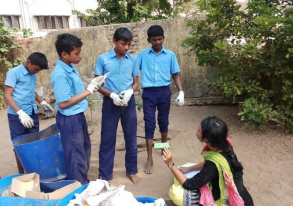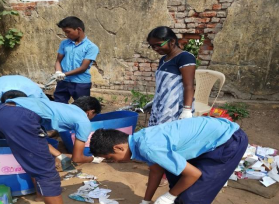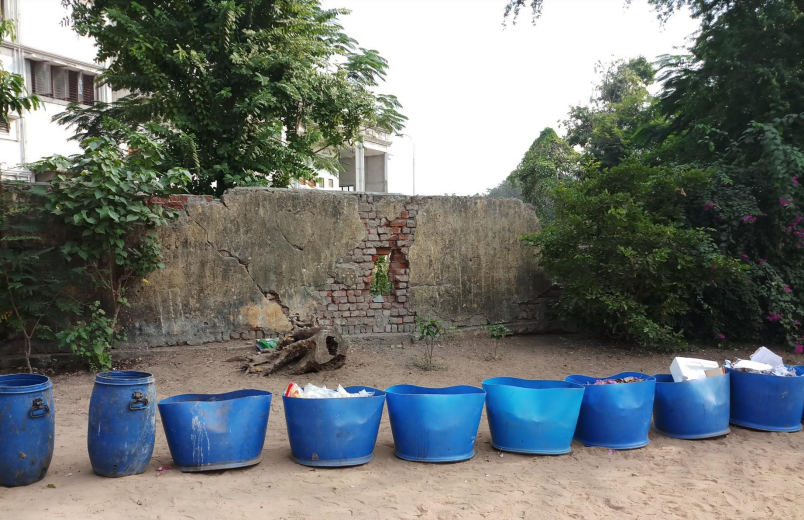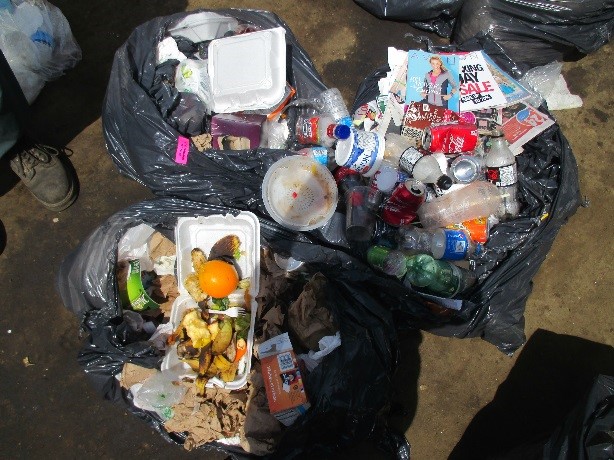How To Do a Waste Audit in your school
Purpose: A waste audit is an activity where students look at the different types of waste that is found in the bins across the school.
The purpose of the audit is for the students to learn about what kind of waste is in their school bins and how much of this waste is recyclable.
Time: 1-2hours
Equipment and materials:
- Sheet to empty the waste onto an old sheet etc (if conducting the audit indoors)
- Scales (if measuring my weight)
- Buckets/ Containers to be used as sorting containers
- Papers and pencils
- Worksheet printed
- Signs for the sorting bins:
-
- General waste
- Organics – food scraps/ plant material
- Paper
- Recyclable/reusable items
How to conduct the waste audit in your school
The waste audit will be conducted by students working in groups to sort the waste from bins.
Safety
-Wear protective gloves while handling the waste.
-Check for sharp objects or toxic substances.
-Be careful not to trip on the waste or sheet.
- Collect bins across the school (e.g. classrooms, staffroom, office, yard).

https://greenforeverenvironmental.com/what-is-a-waste-audit-benefits-and-why-every-business-needs-a-waste-audit-in-2020-and-beyond/
2. Allocate bins to each group of 4-5 students.

3. Empty the bins onto an old sheet (if indoors) or on the grass outside.

4. Sort the waste into general waste, organic waste, reusable waste, paper waste (use tarpaulin/old sheet if necessary).

5. Measure the waste for each category – either by weighing the waste in each bin (or assessing the volume in each bin).

6. Record the measurements for each waste category on the worksheet (Click here to download the worksheet).

7. Present the results. For example: make a chart or graph of the result. These charts can be displayed by the students at the school assembly and pinned to the school notice board. Creating these charts could be done as part of a Mathematics lesson.
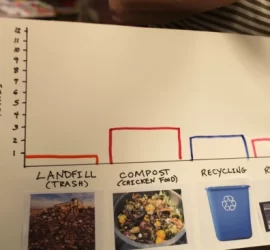
Potential curriculum links
Mathematics – scope for measurement activities, graphing results
Science and Social Studies – learning about resource management, where materials come from, organic and inorganic matter, health education
English –related children’s stories about waste management: https://sustainability-and-stories.org/stories-waste/. This website includes teaching resources with story recordings, worksheets and PowerPoints. Or students can write out instructions (procedural writing) about how to conduct a waste audit.
Design – plastic bottle design challenge
For example: Design Challenge: Repurposing Used Plastic Bottles
Extension Activities
- Start a class discussion about what has been learnt in the classroom audit.
- Ask the class what they think needs to be done to reduce waste going into landfill in your community.
- Are there other places besides school where waste could be audited?
- In your school use separate bins for waste so that it can be composted, recycled or reused.
- The class could elect students to act as waste monitors.
- If the class decides on separate bins, another waste audit could be done to see if these actions have reduced landfill waste.
- Students could think about ways to spread the message of reducing waste at school and in the community.
- Students could complete the Plastic Bottle Design Challenge.

Video examples – waste sorting and reduction in schools
You can also search for waste free schools, plastic free schools, bin free schools.
Wipe Out Waste school program – Immanuel Primary School and Star of the Sea School
War On Waste: Waste Sorting — Sturt Primary School
War on Waste school programs – North Adelaide Primary School
War On Waste — Kiama High School
Useful website links for reference
- The Wheelie Big Challenge
https://eco-schoolsni.etinu.net/cgi-bin/publications?instanceID=1&do=publications&selectedTag=%%
- Pioneering the Simple Life
https://pioneeringthesimplelife.org/2017/05/05/how-to-do-a-classroom-waste-aud
